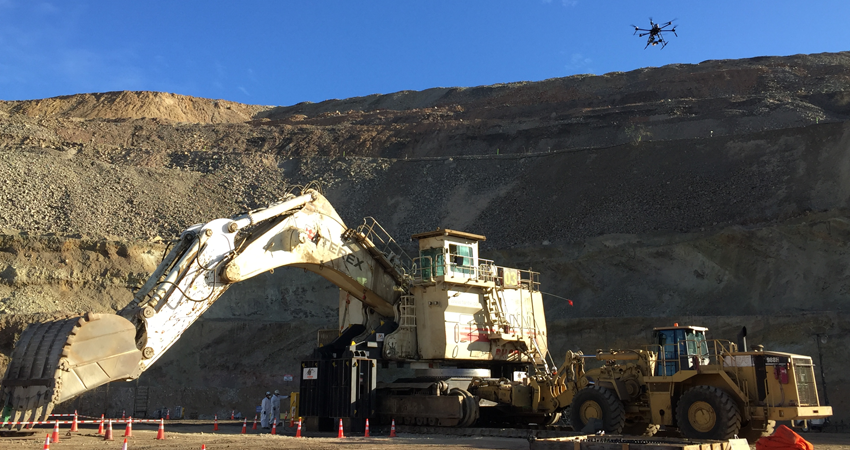A look behind two of the latest innovative RACE21™ programs.
Reaching new heights with remote inspection technology at Carmen de Andacollo (CDA)
Teams at CDA are piloting a new way to complete inspections—literally. This method is safer, more efficient and more accurate, and provides an opportunity for our people to develop and use new skills. The new method? Drones.
Using two new drones, supplied by Chilean company Robomotic, the RACE21™ team is working jointly with CDA to implement equipment and topographic inspections using two different types of technology.
The first drone—used for equipment inspections—weighs 9 kilograms and is equipped with a thermal camera and a wall thickness camera, which uses ultrasound to collect thickness readings. Trained employee pilots will fly the drone over the site, gathering thermal and ultrasound images of equipment. From these images, they can see what parts of the equipment are showing wear and need repair or replacement. This method reduces the amount of time spent on an inspection by 80% and allows us to predict equipment issues earlier, resulting in cost savings on new equipment and repairs.
The second drone weighs in at 12 kilograms and uses a cutting-edge Light Detection and Ranging (LiDAR) camera to measure the topography of a site. The information the LiDAR camera collects is then fed into a GIS database, where a topographic model can be created. This method also allows us to keep topographic data more up to date, with less of a delay between inspections.
In both cases, these drones provide accurate and cost-effective methods of collecting critical information about equipment and topography at the site. As well, the drones make these inspections safer; instead of sending someone out into the field, the drones allow our workers to perform the same work remotely, at a safe distance.
Enhancing COVID-19 contact tracing and safety management capabilities
The initial COVID-19 response plan for the coal business unit included a robust system for tracking positive cases and managing safety protocols. But as part of continuous improvement in our pandemic protocols, the health and safety team sought to identify an even more effective way to organize contact tracing data.
The team at RACE21™ was up for the challenge. In collaboration with other Teck groups, the team built a fully functional solution in less than two weeks: the Digital Contact Tracing framework (COVID DCT). Now in use across all of our steelmaking coal operations, the DCT framework replaces the previous manual process with digital forms that compile information into a comprehensive online dashboard. Here, the health and safety team can easily track and manage COVID-19 cases, thereby expediting the communication process and helping to reduce the spread of COVID-19.
“RACE21™ rapidly mobilized a small team from different locations, including Coal, Red Dog and the corporate office, and was able to successfully implement a new process for digital contact tracing,” shared Taylor Burgess, Lead, Health and Safety for Coal.
The team also looked into bolstering this solution with potential proximity-tracing technologies, to help maintain physical distancing. These technologies are in trial and will continue to evolve throughout the pandemic response. If any of the technologies receive a positive evaluation, they will be considered for rollout across other Teck operations.
Developed in real time and under the pressure of a global pandemic, DCT and possible physical distancing technologies show the potential of bringing the innovative RACE21™ approach to solving a range of challenges.


